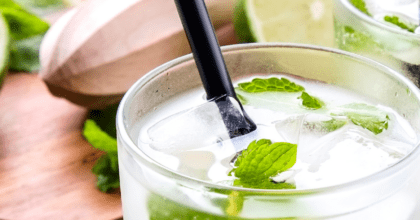Generation Zzz: younger consumers kept awake by energy drinks
“They are born into a world of fast communication and instant gratification – but it looks like they need a little extra help to get through their frenzied days. Indeed, according to latest research from Mintel, energy drinks are a huge factor in keeping the so-called ‘Generation Z’ (those born in the last decade of the Millennium) going, with the majority (73%) of them drinking energy drinks, compared to only three in 10 (31%) of 55+ year-olds.
Furthermore, while taste is stated as the primary reason for buying energy drinks by 73% of 16 to 24 year-olds, up to seven in 10 (70%) of them choose energy drinks as they provide a general energy boost and almost the same number (66%) specifically indicate the improvement of their performance at work or while studying as a key reason of consumption.
Jonny Forsyth, Senior Drinks Analyst at Mintel, said:
“The current younger generation are more impatient and keen on living a multi-dimensional, fast-paced lifestyle than has been the case for previous cohorts. It also highlights a generational difference, specifically the younger generation’s use of everyday ‘uppers’ and ‘downers’ to control their moods or enhance their performance. Therefore, in spite of having less money in their pockets, they are happy to pay for added energy to facilitate their full-on lifestyles.”
And it appears that it is not only age, but also location which has a strong impact on the consumption of energy drinks. While half of Brits (50%) drink energy drinks, almost six in 10 (57%) Londoners drink them and of those drinkers, a quarter (23%) drink them as often as every day. This compares to 18% in the Midlands, 15% in the North and Scotland, 14% in the South West and Wales, 13% in the North West and 12% in the South East and East Anglia. Interestingly, despite the home remaining the most popular place for consumption among the majority (82%) of Brits, Londoners (71%) are more likely to drink them while on the train, bus or while walking, as opposed to 66% in the north West, 63% in the north and Scotland, 61% in the South West, Wales, East and West Midlands and 58% in the South East.
Despite being initially designed for aiding sports performance, Mintel’s research shows that the majority (70%) of all those who drink sport and energy drinks do so as a general energy booster, compared to only 59% who drink them specifically for physical activity. Furthermore, almost six in 10 (57%) users admit to drinking them in order to get through a tiring day while over half (54%) use them to wake up and over four in 10 (44%) to “pick up” their mood.
“While these drinks may have started off as aids to physical exercise, they are increasingly filling a more holistic lifestyle need especially for 16-34 year-olds. The UK has one of the hardest working cultures in Europe and an estimated 27 million workers. Whether it be energy to concentrate and achieve in the workplace or a booster to allow for after-work socialising when they might otherwise feel tired and want to go home, the potential for the market is huge.” Jonny adds.
Although incomes have been squeezed by the economic downturn, consumers have judged the combination of energy-giving functionality and taste as worth the premium – making energy drinks the success story within the non-alcoholic market over the past three years. Showing the importance of their energy-giving functionality among consumers, the combined markets for energy and sport drinks are estimated to reach £1.1 billion in 2011, from £920 million back in 2008. Moreover, Mintel forecasts that there will be a massive volume growth (85%) in the next five years meaning that the market will reach an estimated £1.8 billion by 2016.
When it comes to product innovations, the first six months of the year (January to June 2011) saw Europe as the most active region, accounting for 40% of total global launches, followed by Asia Pacific with 24%. On the other hand, North America dropped from second to third place, now constituting just under a fifth (19%) of new products. Furthermore, research from Mintel shows that manufacturers are increasingly targeting diet/low sugar variants, which registered the biggest rise accounting for 16% market share, up 10% compared to the last six months of 2010. And to appeal to increasingly health-conscious consumers, energy and sports drinks have aimed to strip out additives from their formulations, with the no additives/preservatives claim accounting for a 16% share, up 5% for the same review period.
-
Mintel StoreGet smart fast with our exclusive market research reports, delivering the latest data, innovation, trends and strategic recommendations....View reports
-
Mintel LeapMintel Leap is a revolutionary new AI-powered platform that will transform your research process....Book a demo







































